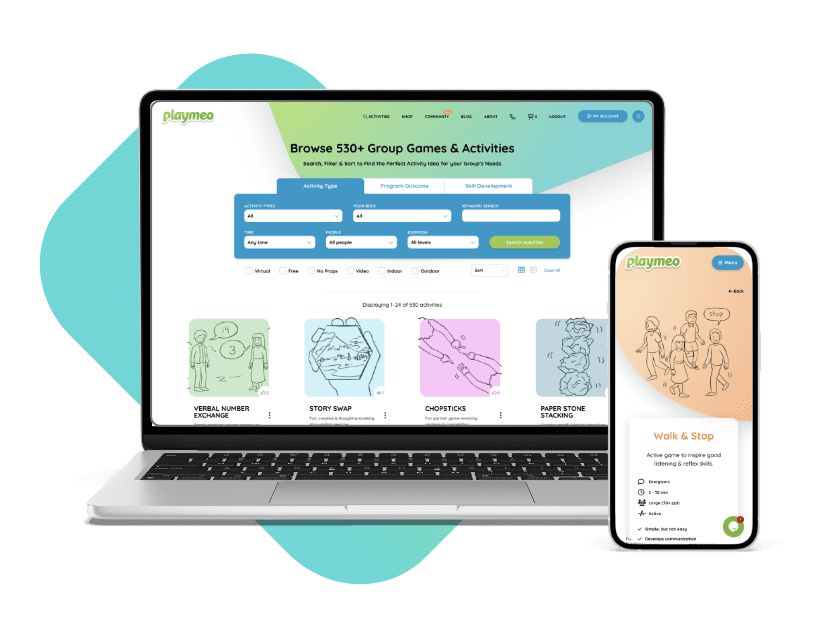Readers of this blog will know that I have long been an enthusiastic supporter of the “connect before content” approach.
Or, in other words, any strategy that invites people to connect with one another before you dive into the content (the purpose they have gathered) has been shown to amplify the results of whatever you’re trying to get done.
That said, have you, like me, used the words connection and belonging interchangeably?
Does Connection = Belonging?
My good friend Chad Littlefield wrote an article about this recently and it caused me to ponder.
Do the time and energy I invest with a group to build their connections also build belonging? Is it the same thing? Chad offered a useful set of definitions, so I’ve come to believe that connection is not the same as belonging. And then, he went one step further to explore what trust was.
Adopting Chad’s words, he described each of these concepts in this way:
- Connection: happens when people are seen, heard, and understood for exactly who they are (and for who they are not.)
- Belonging: is when people are accepted for who they are (and for who they are not.)
- Trust: is when people can express who they are (and who they are not) with an assurance of being included and uplifted in the process.
Everything is created in language, so the words we choose to use (or not) as educators, facilitators and trainers matter, a lot.
I take a lot of pride in the words and language I use when I work with a group. These definitions have pushed me further to deepen my understanding of the difference between these terms.
What Do You Think?
Is this just pedantic or do you share our understanding that connection, belonging and trust are all different?
Is connection the same as belonging?
Share your reflections below and tell us how you use these terms.

No Props? No Problem!
Get 150+ no-prop games & activities + exclusive 30-day free trial of playmeo. Scan QR codes to view activity videos, leadership tips, etc.

EMOJI Feeling Cards
50+ cards that portray a range of emotions from happy, sad, angry & confused. Ideal for building emotional literacy skills.

Wow, you’ve been busy!
You can open 1 more
activity for free.
Limit resets every 24 hours
or click below to get unlimited access.











Great questions. They are of particular interest to me having just finished Brené Brown’s Dare to Lead and Braving the Wilderness. For the past few weeks I’ve been wrestling with the concepts of courage, vulnerability, trust, and belonging with new lenses.
Brown describes “true belonging” as “the spiritual practice of believing in and belong to yourself so deeply that you can share your most authentic self with the world and find sacredness in both being a part of something and standing alone in the wilderness. True belonging doesn’t require you to change who you are; it requires you to be who you are.”
This definition challenges Chad’s definition some. The locus of Chad’s definition is other people. One experiences belonging depending on how others receive her/him/them. Brown’s starting point is self. The locus of belonging in Brown’s definition is absolute belonging to one’s self first. It doesn’t require other people. It’s being able to stand with or without others.
I also think that trust is more than being included or uplifted as one expresses self. Here again, I lean towards Brown’s definition that trust is the “stacking and layering of small moments and reciprocal vulnerability.” Emphasis on “stacking and layering of small moments” and “reciprocal” vulnerability.
Thanks for the questions!
Oooo, I love your contribution here Mary, thank you. You have shifted my thinking too – I totally get how belonging should envelop self as much as others. And the extra layers of vulnerability really helps me understand what trust is more deeply. Thank you for taking the time to comment (with a nod to Brené Brown, too.)
Hi Mark, this is quite thought provoking. I think you can be connected without belonging.
I’ve just started reading The Culture Code which looks at belonging as key to successful teams/leaders. It’s exciting to read, and I am challenged to think about we can create the sense of belonging in virtual space because proximity and touch are factors.
Cheers
Agreed Jennifer, I too believe that people can feel connected without belonging. This is much the same as thinking that “fitting in” is belonging – it is not. Thanks for commenting and referring me to another great book 🙂